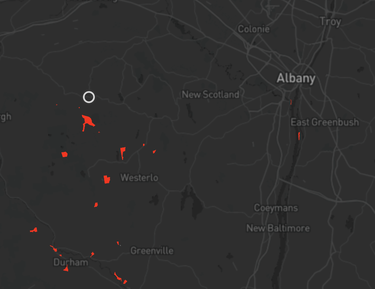FCC program will provide internet connectivity for some Hilltown residents
HILLTOWNS — Some areas of the Hilltowns that struggle with internet connectivity have been promised better connection in the next 10 years by the Federal Communications Commission.
The FCC is providing $20 billion from its Rural Digital Opportunity Fund to companies that have proven they can provide a certain level of internet service to various locations across the country.
Included in the FCC’s first phase of the funding program is a patchwork of unserved Hilltown locations in Rensselaerville, Westerlo, and Berne. It’s not clear how many households will benefit from the coverage, but a release from the office of the Hilltowns’ congressional representative, Paul Tonko, said that 55 locations in Albany County will receive service, and an FCC map shows that most Albany County service areas included in the program are within the Hilltowns.
Tonko’s spokesman, Matt Sonneborn, could not immediately be reached for further information.
The service will be provided via satellite by Space Exploration Technologies Corp., or SpaceX, which received more than $885 million from the Rural Digital Opportunity Fund over a 10-year period, which it will use to add satellites to its Starlink satellite system.
The company, which has so far launched roughly 900 of a planned 12,000 satellites, first began offering satellite broadband service in October, sending out a 19-inch satellite dish and a router to customers in the United States and Canada that signed up for SpaceX’s beta program.
To expand coverage using FCC funds, SpaceX is obligated to provide low-latency and above-baseline speeds within 10 years, with latency not exceeding 100 milliseconds and speeds not less than 100 megabits per second for uploading and 20 Mbps for downloading, which is comparable to numbers advertised by local internet-service providers.
SpaceX was founded by Elon Musk in 2002 with the goal of reducing the cost of space transportation so that Mars can be colonized. In 2015, Musk announced the development of Starlink, a satellite constellation, to provide broadband internet service.
Internet access in the Hilltowns has become more necessary than ever as a result of the coronavirus pandemic, which forced some residents to work or attend school remotely. But improving coverage in such a sparsely populated region can be more expensive than is worthwhile for a profit-seeking entity, Hudson Valley Wireless General Manager Jason Guzzo told The Enterprise in June, and said that subsidies would be critical for rural coverage.
It’s usually that last 1 or 2 percent of households in an area, Guzzo said, “that could be 70-, 80-percent of the cost of building the network. Those last few households are very difficult to cover.”

